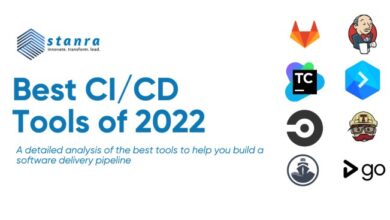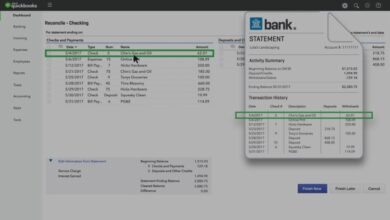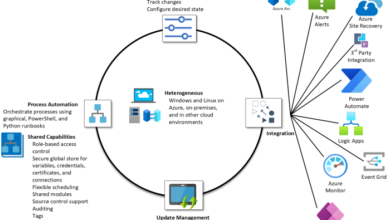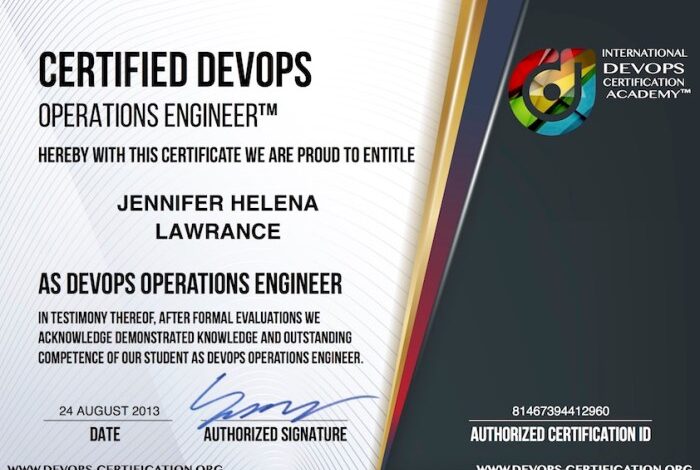
DevOps Certification Prep Course: Your Guide to Success
DevOps certification prep courses are gaining popularity as individuals and organizations seek to validate their expertise in this rapidly evolving field. These courses offer a structured approach to mastering the core principles, tools, and best practices of DevOps, equipping you with the knowledge and skills needed to excel in today’s technology-driven landscape.
From understanding the fundamental concepts of DevOps to delving into the intricacies of automation, containerization, and CI/CD pipelines, these courses provide a comprehensive overview of the DevOps ecosystem. They cover essential topics such as configuration management, security, and collaboration, empowering you to navigate the challenges and opportunities of modern software development.
Introduction to DevOps
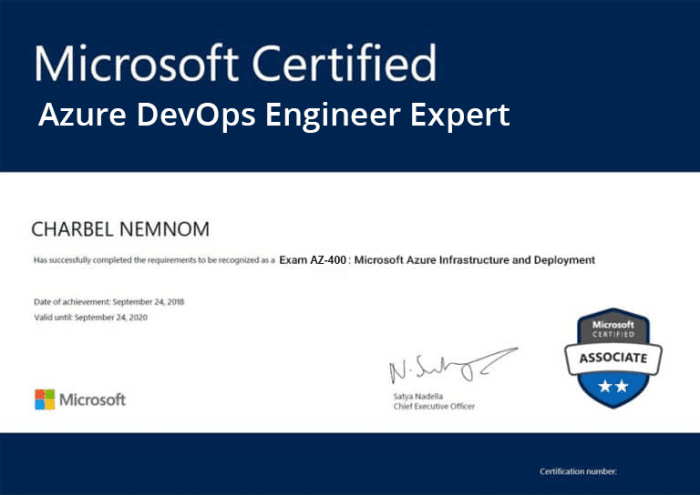
DevOps is a set of practices that combines software development (Dev) and IT operations (Ops) to shorten the systems development life cycle and provide continuous delivery with high software quality. It emphasizes communication, collaboration, and integration between development and operations teams.DevOps aims to automate and streamline the software development process, from code to deployment, by using tools and practices that facilitate continuous integration, continuous delivery, and continuous feedback.
Core Principles of DevOps
DevOps follows a set of core principles that guide its implementation. These principles are:
- Automation: DevOps promotes automating as many tasks as possible to reduce manual errors, increase efficiency, and improve consistency.
- Collaboration: Effective communication and collaboration between development and operations teams are crucial for successful DevOps implementation. This involves breaking down silos and fostering a culture of shared responsibility.
- Continuous Integration and Continuous Delivery (CI/CD): DevOps emphasizes continuous integration, where code changes are frequently merged into a shared repository, and continuous delivery, where changes are automatically built, tested, and deployed to production.
- Monitoring and Feedback: Continuous monitoring of applications and infrastructure is essential to identify and resolve issues quickly. Feedback loops are also important for continuous improvement.
- Infrastructure as Code (IaC): DevOps promotes treating infrastructure as code, allowing for automated provisioning, configuration, and management of infrastructure resources.
Benefits of Adopting DevOps Practices
DevOps practices bring numerous benefits to organizations, including:
- Faster Time to Market: DevOps accelerates the software development lifecycle, allowing organizations to release new features and updates more quickly.
- Improved Software Quality: DevOps emphasizes automation and continuous testing, leading to higher-quality software with fewer bugs and defects.
- Increased Efficiency and Productivity: Automation and streamlined processes improve team efficiency and productivity, allowing teams to focus on higher-value tasks.
- Enhanced Reliability and Stability: DevOps practices, such as continuous monitoring and feedback, help ensure the stability and reliability of applications and infrastructure.
- Improved Customer Satisfaction: Faster delivery cycles and higher-quality software contribute to improved customer satisfaction.
Role of Automation in DevOps
Automation is a cornerstone of DevOps. It helps to:
- Reduce Manual Errors: Automating repetitive tasks reduces the risk of human errors, improving accuracy and consistency.
- Increase Efficiency: Automation streamlines processes, allowing teams to accomplish tasks faster and with fewer resources.
- Improve Consistency: Automation ensures that tasks are performed consistently, regardless of who is performing them.
- Enable Continuous Integration and Delivery: Automation is essential for implementing CI/CD pipelines, enabling continuous integration, testing, and deployment.
Key DevOps Tools and Technologies
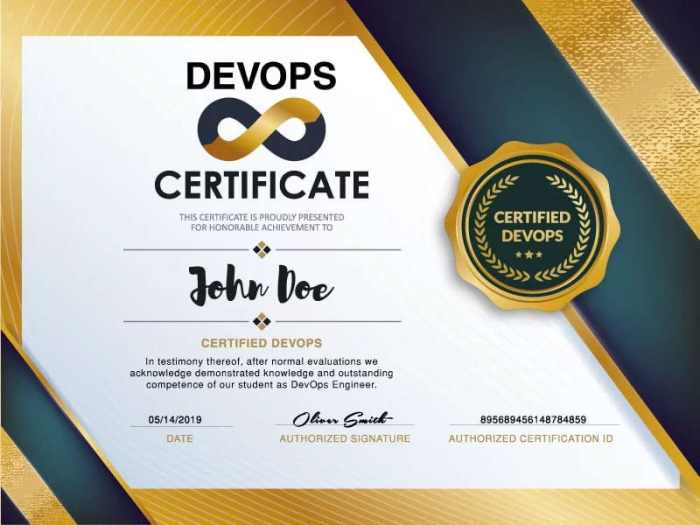
DevOps relies on a diverse set of tools and technologies to automate processes, enhance collaboration, and accelerate software delivery. These tools span various aspects of the software development lifecycle, from code development to deployment and monitoring.
Common DevOps Tools
DevOps tools are designed to streamline and automate various tasks, enabling teams to work more efficiently and effectively. Here’s a table outlining some common DevOps tools, their functionalities, and use cases:
| Tool | Functionality | Use Cases |
|---|---|---|
| Jenkins | Continuous Integration and Continuous Delivery (CI/CD) automation server | Automating builds, testing, and deployments; triggering workflows based on events |
| Ansible | Configuration management and orchestration tool | Provisioning and configuring infrastructure, automating tasks across multiple systems |
| Docker | Containerization platform | Packaging and running applications in isolated containers, ensuring consistent environments |
| Kubernetes | Container orchestration platform | Managing and scaling containerized applications, automating deployments and scaling |
| Git | Version control system | Tracking changes to code, collaborating on projects, managing code history |
| Terraform | Infrastructure as Code (IaC) tool | Defining and managing infrastructure resources using code, ensuring consistency and reproducibility |
| Prometheus | Monitoring and alerting system | Collecting metrics, visualizing data, and triggering alerts based on predefined thresholds |
Configuration Management Tools
Configuration management tools play a crucial role in automating the process of provisioning and configuring infrastructure, ensuring consistency and reducing manual errors.
Ansible
Ansible is an agentless configuration management tool that uses YAML files to define infrastructure configurations. It uses a simple syntax and a push-based approach, where commands are executed on remote nodes.
Puppet
Puppet is a declarative configuration management tool that uses a domain-specific language (DSL) to define infrastructure configurations. It employs a pull-based approach, where nodes periodically check for updates and apply changes.
Chef
Chef is another popular configuration management tool that uses a Ruby-based DSL to define infrastructure configurations. It utilizes a client-server architecture, where nodes periodically check in with the server for updates.
Containerization Technologies
Containerization technologies, such as Docker and Kubernetes, have revolutionized the way applications are packaged and deployed.
Docker
Docker is a platform for building, sharing, and running containerized applications. It provides a lightweight and portable way to package applications and their dependencies, ensuring consistency across different environments. Docker images are used to create containers, which are isolated environments that run applications.
Kubernetes
Kubernetes is an open-source container orchestration platform that automates the deployment, scaling, and management of containerized applications. It provides features like service discovery, load balancing, and self-healing, making it ideal for managing complex and distributed applications.
DevOps Certification Overview: Devops Certification Prep Course
DevOps certifications are valuable credentials that demonstrate your knowledge and skills in the DevOps methodology. They are a great way to advance your career, validate your expertise, and enhance your earning potential.These certifications are designed to provide individuals with a comprehensive understanding of DevOps principles, tools, and best practices.
They cover a wide range of topics, including continuous integration and continuous delivery (CI/CD), infrastructure as code (IaC), automation, cloud computing, and security.
Getting certified in DevOps can be a game-changer for your career, but the prep course can feel overwhelming. It’s like trying to choose Tim Cook’s top five Apple products blindfolded – you know there are some amazing choices, but it’s hard to know where to start! Just like Tim Cook had to prioritize, you need to focus on the key concepts and tools that will make you stand out in the DevOps world.
The good news is, with the right strategy and resources, you can conquer that prep course and land your dream job.
Types of DevOps Certifications
There are various DevOps certifications available, each catering to a specific target audience and skill level.
- Vendor-Specific Certifications:These certifications are offered by technology vendors such as AWS, Azure, Google Cloud, Kubernetes, and Jenkins. They focus on the specific tools and services provided by the vendor, providing in-depth knowledge and practical skills in using their platforms.
- Industry-Standard Certifications:These certifications are developed by organizations like the DevOps Institute and the International Information System Security Certification Consortium (ISC)² and cover broader DevOps principles and practices. They offer a more general understanding of the DevOps methodology and its application across different environments.
- Professional Certifications:These certifications are offered by professional bodies like the Project Management Institute (PMI) and the Scrum Alliance. They focus on the management and leadership aspects of DevOps, providing individuals with the skills to lead and manage DevOps teams and projects.
Target Audience for DevOps Certifications
DevOps certifications are suitable for a wide range of professionals, including:
- Software Developers:Certifications can help developers gain a deeper understanding of DevOps principles and practices, enabling them to build and deploy applications more efficiently.
- System Administrators:Certifications can equip system administrators with the knowledge and skills to automate infrastructure management, improve system reliability, and enhance security.
- DevOps Engineers:Certifications validate their expertise in DevOps methodologies, tools, and best practices, enhancing their credibility and career opportunities.
- Project Managers:Certifications can help project managers understand how to apply DevOps principles to manage projects effectively, improving collaboration and communication within teams.
- IT Professionals:Certifications can provide IT professionals with the necessary knowledge and skills to navigate the evolving landscape of DevOps, enabling them to contribute to successful DevOps implementations.
DevOps Certification Exam Preparation
Earning a DevOps certification can significantly boost your career prospects. It demonstrates your knowledge and skills in this in-demand field, opening doors to new opportunities and higher salaries. To excel in your DevOps certification exam, a structured and comprehensive preparation strategy is essential.
Exam Syllabus and Key Areas
The DevOps certification exam syllabus varies depending on the specific certification you’re pursuing. However, most exams cover core DevOps principles, practices, and tools. Here’s a breakdown of the key areas typically addressed:
- Version Control Systems:Understanding concepts like branching, merging, and conflict resolution is crucial. Popular version control systems like Git and its functionalities, such as pull requests, are commonly tested.
- Continuous Integration and Continuous Delivery (CI/CD):This section emphasizes the principles and practices of CI/CD, including automation, pipelines, and tools like Jenkins, GitLab CI/CD, and Azure DevOps.
- Infrastructure as Code (IaC):Understanding IaC tools like Terraform, Ansible, and CloudFormation is essential. You should be familiar with their syntax, best practices, and how they automate infrastructure provisioning and configuration.
- Cloud Computing:Knowledge of major cloud providers like AWS, Azure, and GCP is crucial. The exam may test your understanding of cloud services, deployment models, and security considerations.
- Containerization and Orchestration:Docker and Kubernetes are widely used in DevOps. You should understand containerization concepts, Dockerfile creation, and Kubernetes cluster management.
- Monitoring and Logging:The exam may assess your knowledge of monitoring tools like Prometheus and Grafana, as well as logging platforms like ELK stack.
- DevOps Culture and Principles:Understanding DevOps principles, collaboration, communication, and team dynamics is essential.
Effective Exam Preparation Strategies
To maximize your chances of success, consider the following strategies:
- Thorough Syllabus Review:Start by thoroughly reviewing the official exam syllabus to understand the specific topics and their weightings.
- Practice Questions:Utilize practice exams and mock tests to get familiar with the exam format, question types, and time constraints.
- Hands-On Experience:Gain hands-on experience with the tools and technologies mentioned in the syllabus. This practical experience will solidify your understanding.
- Study Groups and Online Resources:Join study groups or online forums to learn from others, share knowledge, and discuss challenging concepts.
- Focus on Weak Areas:Identify your weaknesses and allocate more time to studying those specific areas.
- Time Management:Practice effective time management during your preparation and during the exam itself.
- Stay Calm and Confident:Avoid last-minute cramming and maintain a calm and confident approach on the exam day.
Tips for Success
Here are some additional tips for success:
- Understand the Concepts:Focus on understanding the underlying concepts rather than just memorizing facts.
- Real-World Applications:Think about how the concepts and tools are applied in real-world scenarios.
- Review Notes Regularly:Regularly review your notes and practice questions to reinforce your learning.
- Stay Updated:DevOps is a rapidly evolving field. Stay updated on the latest trends and technologies.
Real-World DevOps Practices
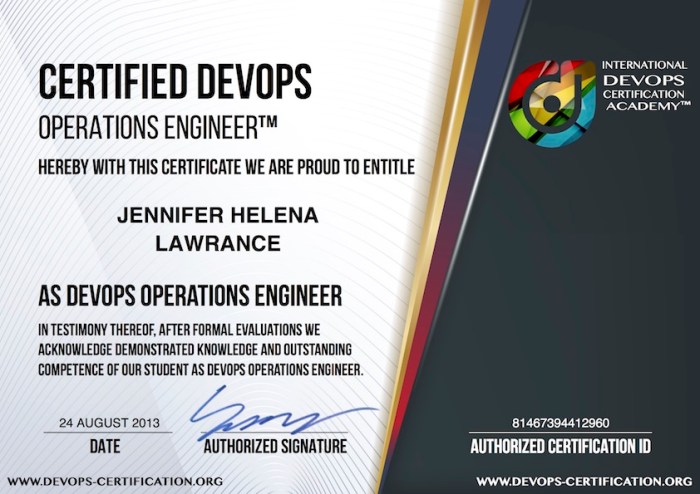
DevOps principles are not merely theoretical concepts; they are implemented in real-world scenarios across various industries. These practices are essential for organizations to achieve agility, efficiency, and continuous improvement in software development and delivery.
Examples of DevOps Principles in Action, Devops certification prep course
DevOps principles are applied in various real-world scenarios, impacting how software is developed, delivered, and maintained. Here are some prominent examples:
- Continuous Integration and Continuous Delivery (CI/CD):A leading online retailer utilizes CI/CD pipelines to automate code builds, testing, and deployments. This allows them to release new features and bug fixes to customers multiple times a day, enhancing user experience and responsiveness to market demands. The automated process reduces manual errors and speeds up the development cycle, enabling the retailer to stay ahead of the competition.
- Infrastructure as Code (IaC):A financial services company uses IaC to manage its cloud infrastructure. By defining infrastructure configurations in code, they ensure consistency, reproducibility, and version control for their cloud environment. This allows for quick provisioning of new environments, reduces manual configuration errors, and facilitates disaster recovery processes.
DevOps certification prep courses can be a real game-changer for your career, equipping you with the skills to streamline software development and deployment. But sometimes, even amidst all the technical learning, a little break with a new feature like the one mentioned in this article, control center on iphone has always been useful has ios 18 just made it exciting , can help you refocus and come back to your studies with renewed energy.
After all, a well-rounded approach to learning is key to success, and that includes taking time to enjoy the latest tech innovations.
- Monitoring and Observability:A social media platform employs extensive monitoring and observability tools to track application performance and identify potential issues in real-time. This allows them to proactively address performance bottlenecks, detect security vulnerabilities, and ensure a seamless user experience.
- Collaboration and Communication:A software development company adopts a collaborative approach to development, leveraging tools like Slack and Git for communication and code sharing. This fosters transparency, facilitates knowledge sharing, and promotes efficient problem-solving among team members.
Case Studies of Successful DevOps Implementations
Several organizations have successfully implemented DevOps principles, achieving significant improvements in their software development processes.
- Netflix:Netflix has been a pioneer in adopting DevOps principles, transitioning from a traditional waterfall model to a highly automated and agile approach. They leverage CI/CD pipelines, microservices architecture, and cloud infrastructure to deliver new features and content to millions of users globally.
This has enabled them to innovate rapidly and maintain a high level of service availability.
- Amazon:Amazon’s massive infrastructure and complex software systems are managed through a robust DevOps culture. They use IaC, automated testing, and continuous deployment to ensure the scalability, reliability, and efficiency of their services. Their DevOps practices have been instrumental in their success as a leading e-commerce platform.
- Google:Google’s DevOps culture is deeply ingrained in their development processes. They have developed tools and practices like Site Reliability Engineering (SRE) to manage their massive infrastructure and complex software systems. This has enabled them to deliver high-quality services at scale, ensuring reliability and performance.
Challenges and Best Practices of DevOps Adoption
While DevOps offers numerous benefits, organizations may encounter challenges during its adoption.
- Cultural Shift:Transitioning to a DevOps culture requires a shift in mindset and collaboration among different teams. This may involve breaking down silos between development and operations, fostering communication, and promoting a shared sense of responsibility.
- Tooling and Automation:Selecting and implementing the right tools and automating processes can be complex. Organizations need to carefully evaluate their needs, consider integration with existing systems, and provide adequate training for team members.
- Security Considerations:DevOps practices require a strong focus on security throughout the development lifecycle. Organizations must incorporate security measures into their CI/CD pipelines, conduct regular security audits, and ensure compliance with relevant regulations.
- Continuous Improvement:DevOps is an iterative process that requires continuous improvement and adaptation. Organizations need to establish feedback loops, monitor key metrics, and make adjustments based on performance data.
Best Practices for DevOps Adoption
- Start Small and Iterate:Begin with a pilot project or a specific area where DevOps can be implemented effectively. This allows for learning, adapting, and gradually scaling the adoption across the organization.
- Focus on Collaboration:Foster communication and collaboration between development, operations, and other relevant teams. This ensures a shared understanding of goals, responsibilities, and processes.
- Embrace Automation:Automate repetitive tasks and processes to reduce errors, improve efficiency, and free up resources for more strategic activities.
- Measure and Monitor:Establish key performance indicators (KPIs) to track progress, identify areas for improvement, and demonstrate the value of DevOps adoption.
Continuous Integration and Continuous Delivery (CI/CD)
CI/CD is a set of practices that enable software development teams to deliver code changes more frequently and reliably. This approach focuses on automating the build, test, and deployment processes, making it possible to release new software updates quickly and efficiently.
While prepping for my DevOps certification, I stumbled upon a fascinating article about the future of personal computing: why next PCs will have NPUs. It seems that the focus is shifting from pure processing power to specialized hardware for tasks like AI and machine learning, which are increasingly important in DevOps.
This shift highlights the need for DevOps professionals to understand the evolving landscape of technology, and how it impacts the tools and processes we use.
CI/CD Pipelines
A CI/CD pipeline is a series of automated steps that transform code from its initial commit to deployment into a production environment. It is a workflow that defines the process of integrating, testing, and deploying code. Each step in the pipeline represents a distinct task, such as building the application, running tests, and deploying the application to a server.
Popular CI/CD Tools
Several popular CI/CD tools are available, each with its unique features and benefits. Here are a few examples:
- Jenkins: Jenkins is an open-source automation server that can be used to create CI/CD pipelines. It is highly customizable and supports a wide range of plugins, making it suitable for various projects.
- GitLab CI: GitLab CI is a built-in CI/CD solution integrated with GitLab. It offers a user-friendly interface and seamless integration with GitLab’s version control system.
- Azure DevOps: Azure DevOps is a cloud-based platform that provides a comprehensive suite of tools for CI/CD, including pipelines, testing, and release management. It is tightly integrated with Microsoft’s Azure cloud platform.
Benefits of CI/CD Practices
Implementing CI/CD practices offers numerous benefits, including:
- Faster Release Cycles: By automating the build, test, and deployment processes, CI/CD enables teams to release new features and updates more frequently.
- Improved Code Quality: Continuous integration encourages developers to commit code frequently, allowing for early detection and resolution of bugs. Automated testing also helps ensure code quality.
- Reduced Risk: CI/CD pipelines allow for automated testing and deployment, reducing the risk of introducing errors into production. This approach helps to minimize downtime and ensure system stability.
- Increased Collaboration: CI/CD promotes collaboration among development, testing, and operations teams. It enables them to work together seamlessly and efficiently, leading to better communication and coordination.
DevOps Culture and Collaboration
DevOps is not just about tools and technologies; it’s fundamentally about fostering a collaborative culture that empowers teams to deliver software faster and more efficiently. This cultural shift is essential for successful DevOps implementation, and it involves breaking down silos, promoting communication, and embracing agile methodologies.
Collaboration and Communication
Effective communication and collaboration are the cornerstones of a successful DevOps team. Without these, it’s nearly impossible to achieve the speed and efficiency that DevOps promises. Here’s how collaboration and communication manifest in DevOps:
- Shared Responsibility: DevOps emphasizes shared responsibility across development, operations, and security teams. This means breaking down traditional silos and encouraging cross-functional collaboration. Everyone has a stake in the success of the software delivery process.
- Open Communication Channels: Teams need to communicate effectively and openly. This can be achieved through various channels, including:
- Instant messaging platforms: Slack, Microsoft Teams, and others facilitate real-time communication.
- Project management tools: Jira, Asana, and Trello enable task tracking, issue reporting, and collaboration on project details.
- Regular meetings: Daily stand-up meetings, sprint reviews, and retrospectives foster transparency and alignment.
- Feedback Loops: Continuous feedback is crucial for improvement. DevOps teams actively seek feedback from customers, users, and other stakeholders to identify areas for improvement and make adjustments quickly.
Agile Methodologies in DevOps
Agile methodologies, such as Scrum and Kanban, play a vital role in DevOps. These methodologies emphasize iterative development, continuous improvement, and collaboration, which align perfectly with the principles of DevOps.
- Iterative Development: Agile methodologies break down projects into smaller, manageable iterations called sprints. This allows teams to deliver value incrementally and adapt to changing requirements quickly.
- Continuous Improvement: Agile methodologies promote a culture of continuous improvement through regular retrospectives and feedback loops. Teams reflect on their processes and identify areas for optimization.
- Cross-Functional Teams: Agile teams are typically cross-functional, bringing together individuals with diverse skills and perspectives. This fosters collaboration and allows for faster decision-making.
Key Cultural Aspects of DevOps
Building a successful DevOps culture requires more than just adopting tools and processes. It’s about cultivating specific cultural values that encourage collaboration, innovation, and continuous improvement.
- Automation: DevOps teams embrace automation to reduce manual tasks, improve efficiency, and minimize errors. This frees up developers to focus on more strategic work.
- Continuous Learning: DevOps emphasizes continuous learning and skill development. Teams are encouraged to explore new technologies, experiment with different approaches, and share their knowledge.
- Trust and Empowerment: A strong DevOps culture is built on trust and empowerment. Teams are given the autonomy to make decisions and take ownership of their work.
- Failure as a Learning Opportunity: DevOps encourages a culture of learning from failures. Teams view failures as opportunities to identify weaknesses and improve their processes.
- Shared Goals and Vision: A clear shared vision and common goals are essential for aligning teams and fostering collaboration. Everyone should understand the overall objectives and how their work contributes to achieving them.
Security in DevOps
In the fast-paced world of DevOps, where rapid deployments and continuous integration are the norm, security often takes a backseat. However, neglecting security can have disastrous consequences, leading to data breaches, system downtime, and reputational damage. Integrating security seamlessly into the DevOps pipeline is crucial to ensure that applications are secure from the start and remain so throughout their lifecycle.
DevSecOps
DevSecOps stands for “Development, Security, and Operations.” It is a security approach that emphasizes embedding security practices into every stage of the DevOps lifecycle, from development to deployment and operations. By shifting security left, DevSecOps aims to identify and mitigate security vulnerabilities early in the development process, preventing them from reaching production.
Benefits of DevSecOps
- Faster Time to Market:By integrating security checks early in the development process, DevSecOps helps to reduce the time spent on fixing security vulnerabilities later, leading to faster application deployments.
- Reduced Security Risks:DevSecOps practices help to identify and address security vulnerabilities before they can be exploited, significantly reducing the risk of security breaches.
- Improved Collaboration:DevSecOps fosters collaboration between development, security, and operations teams, ensuring that everyone is working together to achieve a common goal of secure application delivery.
- Enhanced Security Posture:By automating security testing and incorporating security best practices into the DevOps pipeline, DevSecOps helps to strengthen the overall security posture of the organization.
Security Tools and Best Practices
- Static Application Security Testing (SAST):SAST tools analyze source code for security vulnerabilities before the application is built. Examples include SonarQube and Fortify.
- Dynamic Application Security Testing (DAST):DAST tools test running applications for security vulnerabilities by simulating real-world attacks. Examples include Burp Suite and ZAP.
- Interactive Application Security Testing (IAST):IAST tools combine the benefits of SAST and DAST, providing real-time feedback on security vulnerabilities during application development and testing. Examples include Contrast Security and Checkmarx.
- Security Scanning:Security scanning tools automate the process of identifying security vulnerabilities in software, infrastructure, and networks. Examples include Nessus and OpenVAS.
- Container Security:Container security tools ensure the security of container images and runtime environments. Examples include Aqua Security and Twistlock.
- Infrastructure as Code (IaC):IaC tools allow developers to define and manage infrastructure using code, enabling automated security checks and configurations. Examples include Terraform and CloudFormation.
- Security Automation:Automating security tasks such as vulnerability scanning, penetration testing, and incident response helps to improve efficiency and reduce the risk of human error. Examples include Jenkins and Ansible.
Future Trends in DevOps
The DevOps landscape is constantly evolving, driven by advancements in technology and the ever-growing need for faster and more efficient software delivery. Emerging trends are shaping the future of DevOps, influencing how organizations approach development, deployment, and operations. Understanding these trends is crucial for DevOps professionals to stay ahead of the curve and adapt their skills to meet the demands of the future.
Serverless Computing
Serverless computing, a cloud-based execution model, allows developers to focus on writing code without managing servers. This shift in responsibility offers several benefits for DevOps:
- Reduced Infrastructure Management:DevOps teams can allocate resources to more strategic tasks as serverless platforms handle infrastructure management, scaling, and maintenance.
- Increased Efficiency:Developers can deploy code faster and more efficiently, as they don’t need to spend time configuring and managing servers.
- Cost Optimization:Serverless platforms charge only for the time code is running, leading to cost savings compared to traditional infrastructure.
Examples of serverless platforms include AWS Lambda, Azure Functions, and Google Cloud Functions.
Artificial Intelligence (AI) in DevOps
AI is transforming DevOps by automating tasks, optimizing processes, and providing insights. AI-powered tools can:
- Automate Repetitive Tasks:AI can automate tasks like code reviews, infrastructure provisioning, and performance monitoring, freeing up DevOps teams to focus on more complex challenges.
- Improve Security:AI can analyze vast amounts of data to identify potential security threats and vulnerabilities, helping DevOps teams proactively mitigate risks.
- Optimize Performance:AI algorithms can analyze performance data to identify bottlenecks and suggest improvements, optimizing application performance and efficiency.
Examples of AI-powered tools in DevOps include:
- GitHub Copilot:This AI-powered code completion tool assists developers in writing code faster and more efficiently.
- Amazon CodeGuru Profiler:This tool uses AI to identify performance bottlenecks in code, allowing developers to optimize application performance.


